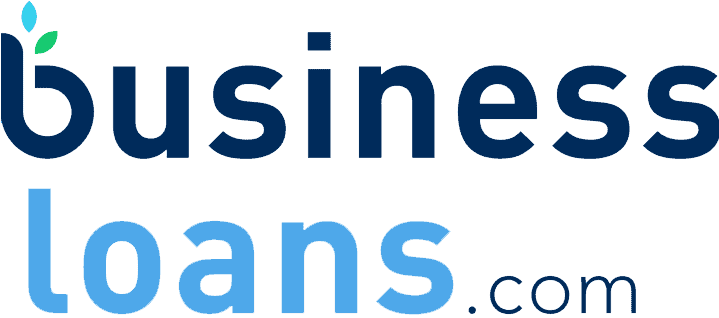
Need help getting funds? Get matched with lenders instantly
Answer some basic questions in less than 3 minutes with no impact to your credit score and compare multiple offers. No commitment, no hassle.
Get Matched💳 Save money on credit card processing with one of our top 5 picks for 2026
Before applying for a business loan, it's important to understand the costs. See how business loan fees and rates can add to your cost of borrowing.
Small business loan rates and fees determine how much you’ll actually pay to borrow. Understanding how they work is the key to finding the most affordable loan for your business.
In this guide, we break down common business loan rates and fees so you can confidently compare lenders and choose the best small business loan for your needs.
Table of Contents
Interest is a percentage of the principal (the amount you borrow) that’s added to your total repayment amount. It’s how lenders make money on business loans.
Small business loans typically come with one of two interest rate types: fixed or variable.
Because variable rates can move in either direction, it’s impossible to predict which option will cost less overall. Fixed-rate loans offer stability, while variable-rate loans carry more uncertainty.
Not all business loans use interest rates. Many short-term loans instead use factor rates, which allow lenders to earn a return without charging ongoing interest.
A factor rate is a flat multiplier applied once to your loan amount to determine your total repayment. Unlike interest, it does not accrue over time.
Factor rates are usually expressed as decimals, such as 1.3. For example, borrowing $10,000 at a 1.3 factor rate means you’ll repay $13,000 total.
While factor rates are simple, they come with important downsides:
Small business lenders can charge a variety of fees, and no two lenders structure them the same way. In general, the fewer fees a lender charges, the less expensive your loan will be.
While many lenders don’t disclose their full fee structure until after you apply, these are some of the most common small business loan fees to watch for.
An application fee covers the cost of reviewing your loan request, whether you’re approved or not. Most lenders don’t charge application fees upfront, so think carefully before applying with one that does.
An origination fee (sometimes called a closing fee) covers the cost of processing and funding your loan. It’s usually expressed as a percentage of the loan amount — typically 1% to 9% — but may also be a flat fee.
Origination fees are often deducted from your loan proceeds. For example, a $10,000 loan with a 4% origination fee would result in $9,600 deposited into your account.
Draw fees apply to lines of credit rather than term loans. Like origination fees, they’re usually charged as a percentage and deducted from the amount you draw before the funds are disbursed.
SBA loans often come with additional fees, including lender origination fees and SBA guarantee fees. For loans over $150,000, the SBA charges a guarantee fee that the lender may pass on to you.
Loan funds are typically deposited via ACH transfer, which is slower but usually free. Some lenders offer faster wire transfers for a fee, which is typically paid by the borrower.
Most lenders collect payments via ACH. If you choose to pay by check, you may be charged a processing fee to cover the added handling costs.
These ongoing fees cover loan administration, payment processing, and account maintenance. They may be charged monthly, quarterly, or annually, and are sometimes built into your regular payments.
If they’re billed separately, make sure you understand how much they add to your total loan cost.
Missing a payment can trigger a late fee and may negatively affect your business or personal credit score.
Some lenders charge prepayment penalties if you pay off your loan early. This may take the form of a flat fee or a requirement to pay a minimum amount of interest, even if the loan is repaid ahead of schedule.
Comparing loan offers across lenders can be difficult. Annual percentage rate (APR) helps by combining interest and certain fees into a single number. In general, the lower the APR, the less expensive the loan.
If a lender doesn’t provide an APR, you can estimate it using an online calculator.
Maverick Tip: Use our small business loan calculators to compare APR, monthly payments, and total loan costs across term loans, short-term loans, merchant cash advances, and SBA loans.
APR assumes predictable loan behavior and doesn’t capture every scenario:
Finding the right business loan isn’t always easy, but understanding rates and fees makes the process far less stressful. Focus on minimizing your total borrowing cost, and use APR as a comparison tool — not the only deciding factor.
Want to help shape the future of the Merchant Maverick website? Join our testing and survey community!
By providing feedback on how we can improve, you can earn gift cards and get early access to new features.
 Our expert reviewers found BusinessLoans.com to have a quick and easy application process alongside excellent support and guidance for borrowers.
Start A Quick Application
Our expert reviewers found BusinessLoans.com to have a quick and easy application process alongside excellent support and guidance for borrowers.
Start A Quick Application
Help us to improve by providing some feedback on your experience today.
The vendors that appear on this list were chosen by subject matter experts on the basis of product quality, wide usage and availability, and positive reputation.
Merchant Maverick’s ratings are editorial in nature, and are not aggregated from user reviews. Each staff reviewer at Merchant Maverick is a subject matter expert with experience researching, testing, and evaluating small business software and services. The rating of this company or service is based on the author’s expert opinion and analysis of the product, and assessed and seconded by another subject matter expert on staff before publication. Merchant Maverick’s ratings are not influenced by affiliate partnerships.
Our unbiased reviews and content are supported in part by affiliate partnerships, and we adhere to strict guidelines to preserve editorial integrity. The editorial content on this page is not provided by any of the companies mentioned and has not been reviewed, approved or otherwise endorsed by any of these entities. Opinions expressed here are author’s alone.
 Our expert reviewers found BusinessLoans.com to have a quick and easy application process alongside excellent support and guidance for borrowers.
Start A Quick Application
Our expert reviewers found BusinessLoans.com to have a quick and easy application process alongside excellent support and guidance for borrowers.
Start A Quick Application